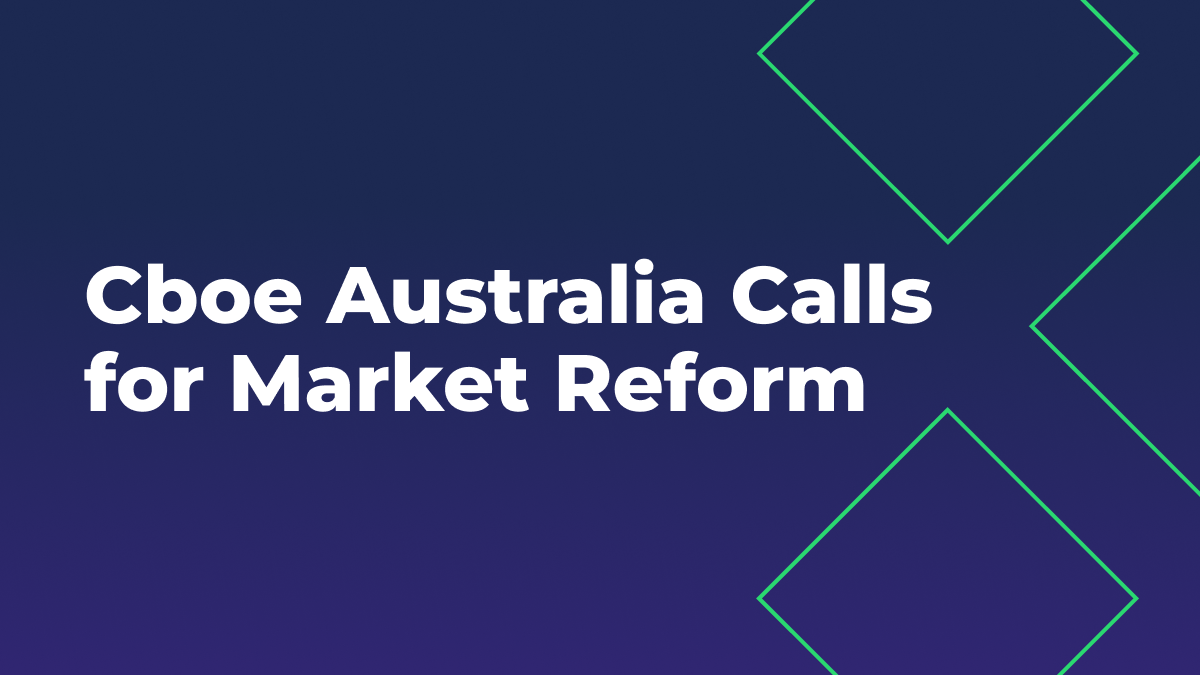
Read More
In early September, Mario Draghi sent ripples through Europe’s post-trade industry. The former ECB President suggested the region should move towards the creation of a single central counterparty (CCP) and central securities depository (CSD) for all securities, replicating the US market structure, as a way of promoting more efficient, integrated and competitive European capital markets.
At Cboe, we fully support efforts to reduce unproductive fragmentation. The intent behind our approach, a pan-European rather than country-by-country one, is to help simplify access to European markets, while improving capital efficiencies and reducing costs for investors, to the benefit of issuers in large and small markets.
With that in mind, we believe competition and user choice is better than forced consolidation as a way to deliver the integration and efficiency that European investors and issuers need to unlock the potential of a Capital Markets Union. In cash equities markets, a competitive framework already exists allowing participants to consolidate their activities on more than one venue to a single CCP for clearing – which Cboe, both as an exchange operator and CCP, has helped to promote. But not all exchange venues are embracing competition that will benefit their customers – indeed, some are actively resisting it.
Over 10 years ago, it was Cboe Europe’s predecessor, Bats Chi-X Europe, that became the first trading venue to offer multi-CCP clearing, with Cboe Clear Europe’s predecessors, EuroCCP and EMCF, among the CCPs that participants could choose. This arrangement, referred to as interoperability between CCPs, means that trading firms, rather than the trading venue, can choose which CCP clears their cash equity transactions. This was made possible through MiFIR’s[1] open access provisions, requiring venues to provide trade feeds to CCPs to allow for competition.
CCP interoperability – where adopted - has been an effective tool for change, substantially lowering post-trade costs in Europe’s cash equities markets. In addition to pan-European operators such as Cboe, Aquis and Turquoise, fully interoperable clearing was also adopted by NASDAQ’s Nordic markets, the LSE (for UK equities) and the SIX Swiss Exchange – helping participants in these markets achieve substantial efficiencies.
A single CCP should not be the end goal, but interoperability that gives users the power to choose the CCP that maximises the benefits to them. And a multiple-CCP model ensures competitive dynamics are maintained. We’re proud of the pricing, economies of scale and netting efficiencies that participants can achieve by using Cboe Clear Europe, but it’s all about choice.
Just this week, we cleared our first trades on Deutsche Börse, marking the first time a trade on Xetra has cleared via an unaffiliated CCP. However, this was via the “preferred” clearing model, which is also operated by Euronext, offering participants a limited degree of choice – by default they must continue to clear trades via the incumbent CCP, but can clear via a second “preferred” CCP only if the other party to a trade also wants to do so.
That many EU incumbent venues have opted for preferred rather than fully-interoperable clearing is unsurprising – they want to protect their existing CCP from competition – even if that means higher fees and lower capital and operational efficiency for their participants and a less integrated European market – a significant roadblock to the goals of the CMU. Full interoperability is what market participants want. They consistently give us that feedback. While we acknowledge that the preferred clearing model can be a step in the right direction – it’s not the final destination.
Ultimately, we believe a competitive framework – with integration and interoperability at the core – is the key to reducing fragmentation and achieving greater efficiencies and scale in Europe. It has taken a decade of continuous hard work by policy makers, market infrastructures and market participants to put that framework in place and to have markets open up to competition. Cboe Clear Europe is now connected to 46 venues, representing 95%[2] of all equity trading in Europe, either through the preferred model or via full interoperability.
But our job is not yet done as we look to encourage the 25%[2] of European markets not offering full interoperability – or any kind of clearing competition - towards interoperability. This is aligned with the true user choice that market participants desire, as evidenced by the growing support for competitive clearing. Cboe Clear Europe’s total pan-European market share reached a record 37.8%[2] in Q3. On venues with full interoperability our market share was 46.1%[2], also a record.
Policy makers are signaling that they want European capital markets to be larger and more competitive on the global stage – something that in my view can only be achieved by prioritizing the needs of market participants. Forced consolidation and a reduction in choice is not a path towards competitiveness. The route forward is to extend competition further - requiring all large venues to move beyond “preferred” clearing and embrace true interoperability – ensuring no anti-competitive barriers exist amongst CCPs. Perhaps it is time to act in the European interest and not national interests alone.
[1] Regulation (EU) No 600/2014 of the European Parliament and of the Council of 15 May 2014 on markets in financial instruments.
[2] Based on internal analysis.